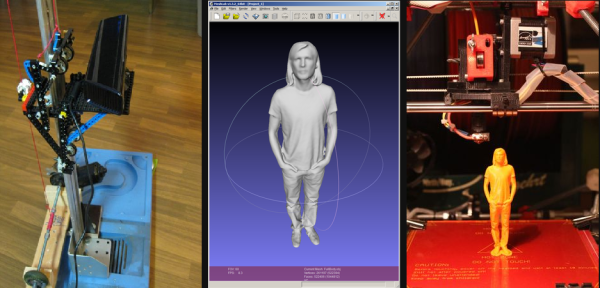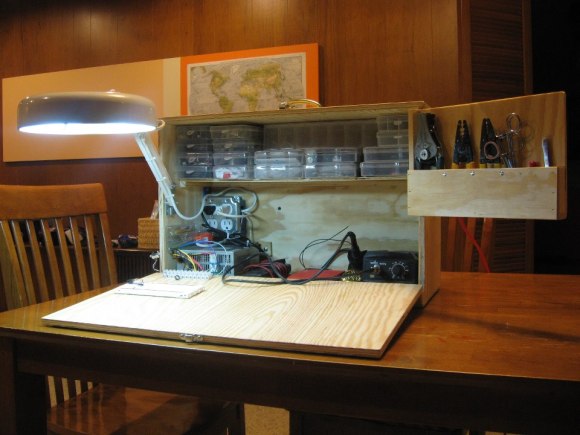[Christopher] from the Bamberg Germany hackerspace, [Backspace], wrote in to tell us about one of the group’s most recent projects. It’s a Kinect-based 3D scanner (translated) that has been made mostly from parts lying around the shop.
There are 2 main components to the hardware-side of this build; the Kinect Stand and the Rotating Platform. The Kinect sits atop a platform made from LEGO pieces. This platform rides up and down an extruded aluminum rail, powered by an old windshield wiper motor.
The Rotating Platform went through a couple of iterations. The first was an un-powered platform supported by 5 roller blade wheels. The lack of automatic rotation didn’t work out so well for scanning so out came another windshield wiper motor which was strapped to an old office chair with the seat replaced by a piece of MDF. This setup may not be the best for the acrophobic, but the scan results speak for themselves.






 What do you do when you have a 10-gallon brew kettle (or any other stainless steel or aluminium thing) with no volume markings (or Hack a Day logos)? If you’re [Itsgus], you use science to
What do you do when you have a 10-gallon brew kettle (or any other stainless steel or aluminium thing) with no volume markings (or Hack a Day logos)? If you’re [Itsgus], you use science to 










